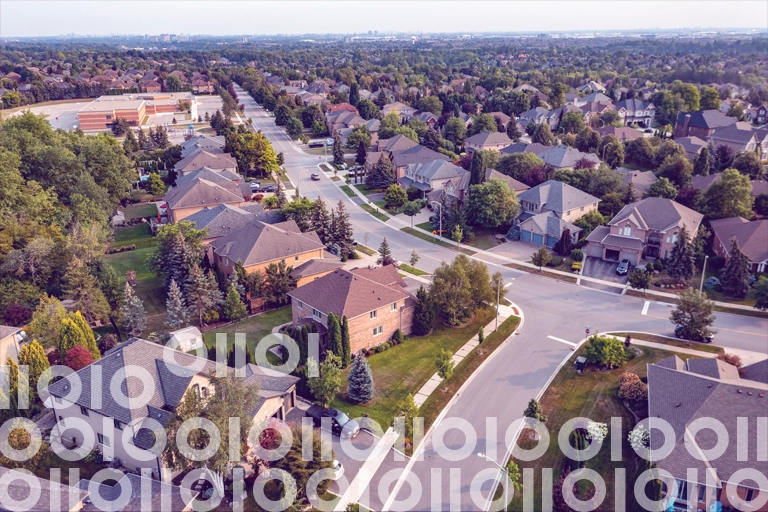On a recent walk through a neighborhood in the town I grew up in – Hanover, New Hampshire – I was surprised to see the number of new homes that have sprung up. It’s a very nice neighborhood where 3,000-square-foot homes are being replaced with homes that are much larger.
This is part of a trend that is becoming increasingly common across the US: older homes are being torn down, making way for new, often larger, single-family residences or multi-unit housing.
This isn’t just a visual shift in our communities. There’s a more complex underlying phenomenon driven by various factors, and it carries significant implications for property and address data management, impacting how businesses in real estate, insurance, and service providers operate and make decisions.
The Forces Behind the Transformation
Several powerful currents are driving this “tear-down and rebuild” trend:
1. Storms and Climate Resilience
Severe weather events and natural disasters are becoming more frequent and severe. Homes damaged beyond repair by hurricanes, floods, and wildfires are often demolished.
At Precisely, we have been closely examining the ripple effects of this reality and working through the implications. Data following major hurricanes, such as Katrina and Ian, for instance, has shown that significant numbers of housing units were deemed uninhabitable and subsequently demolished.
Rebuilding often incorporates more resilient designs and materials, fundamentally altering the look and feel of neighborhoods. Houses on stilts may be safer, but they just aren’t as quaint as the beach cottages they replace.
2. The Quest for Modernity and Space
As my experience in Hanover illustrates, the existing housing stock in desirable neighborhoods may be older or lack modern amenities. Buyers or developers see value in the land, leading to the demolition of a perfectly habitable, albeit outdated, structure to build a larger, more contemporary home.
Studies and industry observations, like those from the National Association of Home Builders (NAHB), have noted that a portion of new home construction occurs on lots where previous structures were torn down.
For example, a 2021 Builder Practices Survey by Home Innovation Research Labs (cited by NAHB’s Eye on Housing) indicated that 6.4 of new single-family homes were “tear-downs/rebuilds.” This often results in a single, smaller home being replaced by a significantly larger one, or a building containing multiple units.
3. Urban Infill and Densification
As land in prime locations becomes scarcer and more expensive, there’s a push for infill development.
This can involve replacing a single-family home with duplexes, townhouses, or small apartment buildings to increase housing density and better utilize existing infrastructure. I see this in the Hanover area as well, where housing for hospital staff is in high demand.
The Data Integrity Impact: Property and Address Data Management Complexities
If your business relies on accurate property and address information, this constant churn creates significant data quality challenges:
-
- Address Lifecycle Complexity
- A single address may be retired. That’s because with new construction, there’s no guarantee the address stays the same, even when a single-family home is replaced with another single-family home.
- One or more new addresses will be created on the same parcel of land if a multi-unit dwelling is constructed.
- Temporary addresses may exist during construction.
- Linking the correct, active address(es) to the right structure, especially when a single-family home becomes a multi-unit dwelling, is a huge hurdle in address data management.
- Evolving Property Characteristics
- Square footage, number of bedrooms/bathrooms, year built, construction materials, and property value all change dramatically.
- Lot boundaries, driveways, and other important features might be reconfigured.
- The geospatial footprint of the structure changes, requiring updated geocoding for accurate location intelligence.
- Occupancy and Demographic Shifts
- Replacing a single-family home with multiple units changes household counts, population density, and potentially the demographic makeup of an area.
- Timeliness and Accuracy Gaps
- Official records and commercial databases can lag behind these physical changes. A property might be listed for sale with old property tax data, an insurance policy might underwrite risk based on a structure that no longer exists, or a utility company might struggle to provision services to newly created units.
- Address Lifecycle Complexity
The Industry Impact: Why This Matters Across Key Sectors
These shifts have major implications across the board. Here are three prime examples:
- Real Estate
Accurate property data is the bedrock of valuations, listings, and market analysis. Outdated information on a torn-down or newly constructed home can lead to flawed appraisals, misleading marketing, and inefficient transactions.
- Insurance
Underwriters rely on accurate property characteristics (age, construction, size, location relative to hazards) to assess risk and set premiums. Insuring a property based on the old structure’s details after a tear-down and rebuild means the risk profile is entirely incorrect, potentially leading to underinsurance or claim disputes.
- Service Providers (Utilities, Telecom, Logistics) – Accurate address and location data are vital for:
-
- Utilities: Efficiently planning infrastructure, connecting new services, and managing existing ones. Incorrect data leads to wasted trips and service delays.
- Telecommunications: Designing network coverage, deploying new infrastructure (like fiber), and ensuring customers can be accurately signed up for services. Bad data means missed service opportunities, delayed installations, and dissatisfied customers.
- Logistics and Delivery: Ensuring packages and services reach the correct new addresses, which is especially complex when one address becomes many. When data’s not up-to-date, failed deliveries and increased delivery times can climb, leading to customer distrust and attrition.
Building Trust in a Changing World
Data is only as valuable as its accuracy, timeliness, and the context that surrounds it. The trend of tear-downs and replacements highlights the critical need for robust data integrity and enrichment processes.
Your business can no longer rely on static snapshots of property and address data. You need:
- Dynamic data: Information that reflects the ongoing lifecycle of a property, from demolition permits to new construction completion and occupancy.
- Comprehensive enrichment: Layering foundational address and property data with additional context, like Multiple Listing Service (MLS) data, updated parcel data, detailed property attributes, and accurate geocodes for new structures, is essential.
- Unique, persistent IDs: The ability to track a location or parcel of land through these transformations, even as addresses and structures change, is crucial for maintaining a coherent longitudinal view.
This trend, when coupled with other developments, contributes to an evolving physical landscape that demands a more sophisticated approach to property and address data management.
Focusing on data quality, completeness, and rich, contextual insights is how you’ll be able to navigate these changes confidently, make better decisions, and serve your customers effectively.
The towns that we grew up in and live in now – and the data that describes them – is constantly changing. Ensuring your data keeps pace is no longer optional; it’s fundamental to success.
To explore the latest advancements in location data management, I encourage you to check out our webinar with TDWI: Location Data Management: Delivering Trust and Efficiency at Enterprise Scale. And as always, our team is here to help, so don’t hesitate to reach out to us directly.







